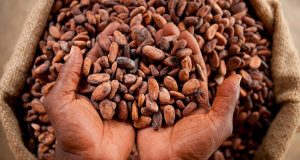At the end of December 2020, total assets of the banking sector stood at GH¢149.3 billion, representing a growth of 15.
7 per cent compared to 22.8 per cent at end-December 2019.
This is against GH¢128.98 billion recorded at end-December 2019 with the lower growth in assets in 2020 reflecting the adverse effects of the COVID-19 pandemic on the sector.
The Bank of Ghana’s Annual Report and Financial Statements for 2020 said developments in the year under review were on account of weaker growth in both domestic and foreign assets of 15.7 per cent and 17.0 per cent, respectively, compared to 23.0 per cent and 19.8 per cent growth in 2019.
The report said the banking sector continued to be the dominant sector with 23 banks, controlling 91.1 per cent of the total assets of the industry.
It said asset growth was mainly driven by increase in deposits, which grew by 24.4 per cent to GH¢103.8 billion at end-December 2020, marginally higher than the 22.2 per cent growth recorded a year earlier.
The report said deposit growth was supported by increase in savings by individuals and firms against the general slowdown in consumer and investment spending in some sectors due to the pandemic.
“Shareholders’ funds grew by 20.8 per cent to GH¢21.2 billion at end-December 2020, compared with a 19.7 per cent at end-December 2019,” it said.
The report said the stable growth in shareholders’ funds reinforced stability and resilience of the banking sector during the review year.
Total borrowings at end-December 2020 contracted was 29.0 per cent as against 37.9 per cent growth at end-December 2019, on account of the strong growth in deposits and shareholders’ funds, amid the slower credit growth.
The report said the decline in borrowings reflected mainly in short-term borrowings, while long-term borrowings increased during the year.
It said in sum, the banking sector at end-December 2020 was robust in spite of the pandemic-induced economic slowdown encountered in the year.
On the Financial Soundness Indicators, the report said in 2020, regulatory support measures and strong profitability growth of the banking sector strengthened financial soundness indicators, such as liquidity, solvency and efficiency.
The report said profitability of the DMBs increased at end-December 2020 over the previous year’s position, as highlighted by the key profitability indicators.
On the asset quality, it said the Non-performing Loan (NPL) ratio inched up to 14.8 per cent at end-December 2020, from 13.9 per cent at end-December 2019.
The deterioration in asset quality in 2020 was due to pandemic-induced loan repayment challenges, and slowdown in credit growth.
It said the total outstanding loans restructured by banks as at December 2020 amounted to GH¢4.5 billion, representing 9.4 per cent of the industry loan book.
In the area of liquidity, the report said in 2020, the banking sector remained liquid.
The ratio of broad liquid assets to total assets increased to 64.1 per cent in 2020, from 61.1 per cent in 2019, on the back of increased banks’ holdings of long-term instruments (securities).
It said the ratio of broad liquid assets to total deposits, however, declined to 89.0 per cent at end-December 2020, from 92.1 per cent at end-December 2019.
The report said investments in bills, securities, and equities increased by 33.0 per cent in 2020, compared with an annual growth of 26.9 per cent in 2019.
“Investments remained the largest component of total assets, with its share increasing to 43.2 per cent, from 37.6 per cent in 2019.In the review year, gross loans and advances grew by 5.8 per cent to GH¢47.8 billion from GH¢45.2 billion at end-December 2019,” it said.
The new loans and advances in 2020 amounted to GH¢34.4 billion, 15.8 per cent higher than the GH¢29.7 billion recorded in the previous year.
However, credit growth was lower in 2020 as compared to 2019 due in part to weak credit demand and also increased repayments, the report said.







